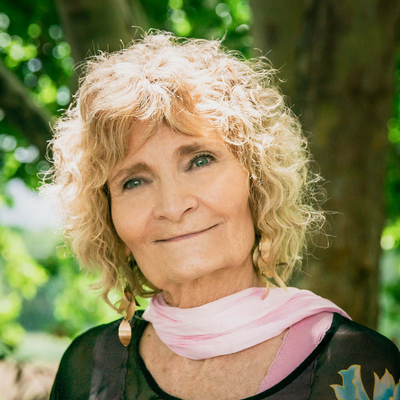Simply Put
In our observances of and interactions with the natural world, we can learn much about: unity without uniformity, commonality amid diversity, and relativity within absolutes. So next time you take a walk or sit in your yard or go for a drive, take note of the natural environment around you. Forget the asphalt of the road or the concrete of your patio. Look up, down, and all around. What do you see? What do you hear? What do you smell? Note the different varieties of plants. Feel the bark of trees, smell the leaves. Do you feel the whisper of a breeze or hear the rush of air under a swooping bird? Are there smells of dampness or dryness? What about insects—do you see or hear them? Are you being serenaded by feathered creatures? What is the color of the soil, or is it merely dirt; what is the difference? After fully enjoying your respite in the world of nature, go deeper into a more reflective place. What can you learn from what you have just observed and experienced? Do you hear the proddings of the world of spirit?
I love the divine pattern in flowers. All types of flowers have the same parts, and yet are of many different colors, shapes, and sizes. Consider the popular rose. It comes in many sizes, textures, and colors, but you know it is a rose, whether it is very large or miniature, whether it is fully opened or merely a tight bud, whether it is deep lavender or a variegated pink, yellow, and orange. You know it is a rose because it has a blueprint, a pattern. There is some commonality to it to make a rose a rose.
Consider irises. Why do we know they are irises? There are different colors; there are different kinds, but they have a pattern of commonality to them that makes them irises. If you look closely at the iris it can teach you something. The late human-rights advocate and minister, teacher, and poet, Clistine Morningstar, wrote a beautiful poem about the iris. The iris taught her something. It reflected divine pattern, and it reflected the beauty of the Trinity.
IRIS or IRISE
This flower lifts from darkness to the sun,
Pure-spun pattern from the mind of God -
Iridescent purple manifesting sheen of hope,
Its triune form resurfacing a vision
Seen long ago and half-forgotten,
Or else reflected from the timeless place -
A hint of Paradise.
So I must also rise
Out of the shadows of uncertainty,
Renounce the ugliness of little self,
Reclaim in gratitude the pattern given me,
Then in new-found innocence,
Open to the Son.
My friend, Ausmaminae Wonson, gifted me (many years ago) with a drawing she had made of an iris, along with a poem she had written about the iris and the honor bestowed upon all women who have chosen to unfold into their unique beauty of reflectivity of the Universe Mother Spirit.
God made one in nature reflective of you,
Standing tall, so elegant,
Strikingly beautiful, timeless -
Exquisite in form.
Her colors so radiant and deep -
Hues of wisdom and truth,
She is a blessing to all.
Her fragrance subtle, ever so humble,
Silently she grows, so gracefully
Changing, surviving with poise
In the harshest of climate,
She brings joy,
Taking inside and integrating
The seasons of change -
Bursting forth ever stronger
The fruits of her labor,
Planted firmly in the ground
And her work at hand.
The iris ever reaching Godward in all her glory
Tells a story of our
"Cosmic Woman of Grace."
Like flowers, all other flora (plants) have something in common, even though there are millions of types and a multitude of classifications. They share the same parts that categorize them as a plant; they have a blueprint within divine pattern.
The same principal applies to the various categories of fauna (animals). Remember as a child, learning in school about what characteristics classify an animal as a mammal? What makes a reptile a reptile, a bird a bird, an amphibian an amphibian, an insect an insect? We see a pattern of commonality, and yet how many kinds of mammals do we have? How many types of reptiles and birds and amphibians and insects? To go even further, using the canine as an example, within the dog family how many breeds of dogs are there? So, within the flora and fauna of our world, much diversity and individuality exists within a divinely-designed pattern.
On a Larger Scale
To extend this idea of relativity within absolutes, consider snowflakes. Each snowflake has its own design. There are no snowflakes that are identical; each one is unique. The URANTIA Book explains that each individual person is unique within his or her God-given personality. Like snowflakes, people have much diversity within their commonality.
On a much larger scale, a cosmic scale, there are certain absolute laws on the physical, mindal, and spirit levels. Permeating throughout the Grand Universe is the presence (in some form) of the Paradise Trinity—the Universal Father (First Source and Center), the Eternal Son (Second Source and Center), and the Infinite Spirit (Third Source and Center), who is often referred to as the Mother aspect of God. In some manner the circuitry, reflectivity, and representation of the love, truth, beauty, and goodness of these three Personalities are experienced by all living beings throughout the superuniverses of time and space, even on Earth. So, if we are receptive and more in attunement with the world of natural and spirit wonder, we too can experience (to certain degrees) the reality of the loving ministry and healing of the Threefold Spirit.
A Family Affair
Coming forth from the three Paradise Deities is a huge network of cosmic family—billions of spirit/celestial beings/personalities who are all part of the pattern of a cosmos of dynamic life. The complementary coordination of this celestial cosmic family is beyond our full understanding, though we too have within us the ability to form human families and societies that are within the divine pattern of the larger celestial cosmic family, some who are active here on our world.
Unfortunately on this planet so many human families are broken, due to many reasons, which I'm not going to get into at this time. Within divine pattern, families ideally should be, together, growing and expanding in heart, mind, and soul. Each family member should be able to unfold into his or her own unique identity and still feel a unity with fellow family members, though they have their differences. Children can be very different from each other within a family, but they do not need to be competitive with each other, and they do not need to compete with their parents. They all can be individuals and complement each other. So the word "complement" is part of unity; it is part of divine pattern.
Administration within Divine Pattern
The principle of divine administration from Paradise throughout the entire Grand Universe is coordination. What does coordination mean? It means unity, harmony, being aware of those others around you. To truly coordinate and be efficient within divine pattern, there must be love and selflessness, not self-absorption. Now, all of us suffer to some extent from selfishness on this planet. Selfishness is naturally part of being a human at this point in our evolution, but so are the natural innate desires within human nature to evolve into self-esteem rather than selfishness. Self-esteem enables individuals to genuinely care for others’ well-being, and thus persons with self-esteem (not arrogance or conceit that are based on self-absorption) are naturally better family members, co-workers, and citizens, because they tend to think and live within divine pattern. Those who do not evolve into the potential of their higher human potential usually do not contribute much to the progress of humankind into cultures based on divine administration principles.
The wealthier, more powerful nations, who “are” the current dominant culture of the world, perpetrate the disease of extreme individuality based on self-centered interests, which results in materialism, nationalism, and unending internal and international conflicts. The unraveling of the web of life in the natural world, the fragmented infrastructure of societies, and poor physical and mental health of humans is also a result of thinking, feeling, and doing outside of the universal divine pattern.
Fundamentalism
What I have noticed in my experiences of what creates disharmony and a lack of unity between people is that—whether between a man and woman (who claim to love each other) or in a family or among members of a tribe or in a workplace or between two nations or among religions—disunity is because people focus mainly on their differences. They get too attached to an old established way of thinking about that other person or that other group or that other nation. They get too fundamentalistic, too attached even to rituals. I have heard people argue about a purification lodge (Inipi). "Well, I'm not going to your sweat lodge. Your door is opening to the west; it should open to the east." With that kind of thinking, focusing on differences, division happens. When people get too attached to their ways of doing things, their ways of thinking, their ways of doing ritual, they become closed to change and growth and miss many opportunities for healing, expansion, and joy that come their way.
We who understand the purpose of ritual realize that ritual usually involves ceremony and symbolism. Rituals can be wonderful tools, but they too should change when it is no longer meaningful and more rote and automatic, because in divine pattern, in God's absolute law, all life should be in dynamic motion, progressing towards perfection within divine pattern. The ideal for any individual, family, tribe, group, and nation is to continually grow, continually evolve into more expansive and loving ways of perceiving, continually unfolding into personality integration, and continually ascending in our spiritual thinking, feeling, and doing. This progress includes the tools, language, and ritual we use in our personal healing and ascension processes. We should strive to continually relate to each other in higher, more respectful and loving ways.
What I have noticed in religious traditionalists—whether in Hinduism, Buddhism, the Indigenous, Christianity, or Islam—is that they become too attached to their rituals and doctrines, thus becoming fundamentalists. We often use the word fundamentalist in relation to certain Christians, though not all Christians (or other religionists) are fundamentalists. Actually fundamentalists come in all shapes, sizes, forms, and are found in all areas. There are fundamentalists in business, politics, science, medicine, education, marriages, and so on. There are fundamentalists who are stuck in doing something a certain way. "This is the way I've always done it; I've always related to you this way, and I'm going to stay this way." It goes on and on and on, and that is what creates disharmony and disunity. That is what creates barriers between people. When we focus on our differences and want everyone to think like we do, then we cannot have unity.


